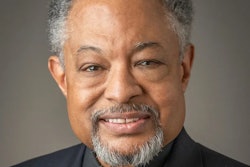Serving the Underserved
Efforts are underway in Congress to amend legislation to improve diversity within the health professions.
By Michael Scott
Efforts to expand diversity in the health professions has received a boost from a prominent member of Congress. U.S. Sen. Bill Frist, R-Tenn., recently introduced a bill to amend the Public Health Service Act as part of a comprehensive initiative to improve the health of minority and other underserved populations. This bill, which is being co-sponsored by Democratic Sens. Edward Kennedy of Massachusetts, Barack Obama of Illinois and Jeff Bingaman of New Mexico, would include funding for the country’s colleges and universities to recruit, train and retain minority students in the health professions.
The proposed amendment comes on the heels of two studies documenting the barriers colleges and universities face in advancing health career opportunities for under-represented populations. Groundbreaking reports published by the Institute of Medicine of the National Academies and the Sullivan Commission on Diversity in the Healthcare Workforce examine the low levels of minority participation in these professions and provide recommendations on the role of higher education institutions in reversing the trend.
Research by several prominent health care foundations suggests that the failure in diversifying the health professions has significantly hampered the delivery of medical care to minorities. Leading experts argue that the insufficient representation of minority physicians, nurses, physical therapists, pharmacists and other industry professionals are among the major factors contributing to the disparities found in patient treatment and outcomes based on race and ethnicity.
According to the U.S. Census Bureau, American Indians, Blacks and Hispanics make up slightly more than a quarter of the U.S. population. Yet they constitute just 6 percent of practicing physicians, less than 5 percent of dentists and less than 7.5 percent of nurses. Dr. Louis W. Sullivan, former Secretary of the U.S. Department of Health and Human Services and president emeritus of Morehouse School of Medicine, says these and other related trends were the main catalysts behind the formation of the Sullivan Commission, a group charged with examining workforce diversity in the health professions. In 2004, the commission released a report, “Missing Persons: Minorities in the Health Professions,” which offered policy recommendations for enhancing the presence of under-represented minorities in the medical, dental, nursing and allied health fields.
“There has been a great deal of interest in this report on the part of higher education leaders throughout the nation, and we have used it to inform and challenge them in their efforts to promote diversity in the health professions,” says Sullivan.
He points to the establishment of the Virginia/Nebraska Alliance, a partnership between several academic institutions to promote the advancement of diversity in the health professions. The partnership includes the University of Nebraska Medical Center, Virginia Commonwealth University, J. Sargeant Reynolds Community College and five historically Black colleges and universities in Virginia.
“While progress has been made along many fronts, our efforts are not proceeding as fast as we had originally anticipated,” says Sullivan. “Nevertheless, we are encouraged by the expanded attention being given to this critical issue and are optimistic that a tipping point will eventually be reached where we can show substantive outcomes.”
U.S. Department of Labor statistics show that more than half of the 30 fastest-growing jobs this decade will be in allied health profession areas. In addition, the demand for physicians will continue to grow, particularly in urban, underserved areas where there is a chronic shortage of providers. The 10th report by the Center for Health Workforce Studies, however, points to a decline in the number of minorities applying to all health profession programs. Many higher education leaders suggest that the U.S. Supreme Court’s 1996 Hopwood v. Texas decision — which effectively ended affirmative action in Texas public colleges and universities and restricted the use of race as a factor in scholarships and financial aid — has had a chilling effect on efforts throughout the nation to diversify various academic programs.
“Clearly, the Hopwood ruling brought about a cooling effect across all higher education fields, and health profession schools were certainly not exempt from this,” says Dr. Charles Terrell, vice president for diversity, policy and programs at the American Association of Medical Colleges, a nonprofit association of medical schools, teaching hospitals and academic societies that endeavors to improve the nation’s health by enhancing the effectiveness of academic medicine.
“While there certainly was some loss of momentum after this ruling, we are now beginning to gain back some ground,” he says. “Nevertheless, it is still clear that minority enrollment numbers have not increased in the manner in which we had hoped.”
A number of higher education leaders concede that deficiencies in academic preparation are also a major barrier to progress.
“It is well known that minority students — particularly those in low-income, inner city areas — are leaving high school unprepared for the rigors of college and health profession careers,” says Sullivan. “Higher education institutions must work closer with the K-12 schools in their geographical areas to strengthen the school system and address issues impeding advancement.”
Catching Them Young
Texas Southern University is one of several historically Black institutions that are building partnerships with local schools in hopes of sparking an interest in the health professions. “Much of our success lies in our outreach efforts to high school students and their teachers and counselors,” says Dr. Barbara Hayes, dean of TSU’s College of Pharmacy and Health Sciences, which holds the distinction of having educated approximately 35 percent of the nation’s Black pharmacists. “Through these partnerships with area schools, we invite prospective students to campus and offer them the opportunity to learn first hand from our faculty and current students what the health professions are all about,” she says.
Hayes says students who visit TSU, despite having trepidations about their level of preparation in prerequisite courses like math and science, are generally curious about what it takes to be successful in the health professions.
“At Texas Southern, our commitment to these students is to provide them with full support along each stage of the academic process, whether through professional development activities, mentoring programs, practitioner panels or other forms of support. We find that this sets them at ease and puts the foundation in place for their success,” says Hayes.
Dr. Thomas E. Gaiter, chief medical officer of Howard University Hospital and associate dean of clinical affairs for the College of Medicine, believes that role model support is a particularly critical element in the success of minority students. Gaiter, a graduate of Tennessee State University, Meharry Medical College and Howard’s residency program, is a strong advocate for this type of mentor relationship because of the value that minority students can gain from professionals that “look like them and can relate to them.” He is also quick to suggest that exposing students to various health profession and mentorship opportunities early in life can play a vital role in shaping their career interests. “It is important to start early,” he says. “Exposing them to the health professions when they first arrive at high school is often too late in the game.”
Overcoming Obstacles
Academics and career mentoring aside, the financial realities of a health care education are the greatest barriers facing prospective entrants. Many minority students, in light of their own economic circumstances, view the health professions as unaffordable career options, say a number of medical school professionals. And as educational financing options become more limited, students are being required to rely extensively on need-based loans.
A study conducted by AAMC seems to support this notion. When a survey was conducted of qualified medical school candidates who had not applied, it was discovered that the prohibitive cost of medical school was the primary deterrent for minorities.
“We are in an era where there are ample amounts of money available for medical school education, but those monies are still largely loan based,” says Terrell. “There is no doubt that under-represented students face major barriers to finding adequate scholarships and other non-loan based sources. This poses a problem for many students whose families struggle to understand the importance of an educational investment and the whole notion of debt.”
Within academic institutions, a lack of qualified faculty is an additional hindrance to progress. Many educational leaders assert that without sufficient faculty resources and facilities, expansion in the number of entrants to various health profession programs is severely restricted. To educate the next generation of health professionals, they say, schools must not only reassess their institutional priorities and resource objectives, but they must develop incentives that encourage more practitioners and graduate students to become faculty members.
“Within the health professions, we have to ask ourselves, ‘How many thousands of applicants are we turning away at our nation’s schools because of a lack of faculty, facilities, training and other resources?’” says Hayes of TSU. “It’s no secret that in order to meet key goals in addressing the diversity issue, we must find ways to accept more students to our programs. Unfortunately, a lack of faculty in critical fields will continue to challenge our ability to expand class sizes and address important shortage needs.”
Despite these and other challenges, there are a number of encouraging signs that suggest that progress is being made along many avenues. Private foundations, for example, are becoming more actively involved, with many increasing their commitments to provide much-needed funding. There is also a greater recognition on the part of academic institutions of the importance of providing minority students with ongoing, extended support at every level. And some schools are expanding their efforts at identifying applicants who, despite lesser academic credentials, show promise.
Sullivan is particularly excited about the progress being made with various educational oversight organizations. “There has been a great deal of dialogue among higher education accreditation bodies of late regarding the importance of including diversity in the accreditation process. It is my belief that vigorous standards around diversity need to be established and integrated into the accreditation evaluation. Mission statements and rhetoric are not simply enough to get the job done.”
In the end, say many diversity advocates, funding such as that being proposed through the revamped Public Health Services Act will become particularly critical in serving as a diversity catalyst.
Says Terrell: “These schools have, in large part, served as the foundation for the survival of minorities in the health professions. I shudder to think of where we would be at this point without their tireless commitment to the cause.”
© Copyright 2005 by DiverseEducation.com





















